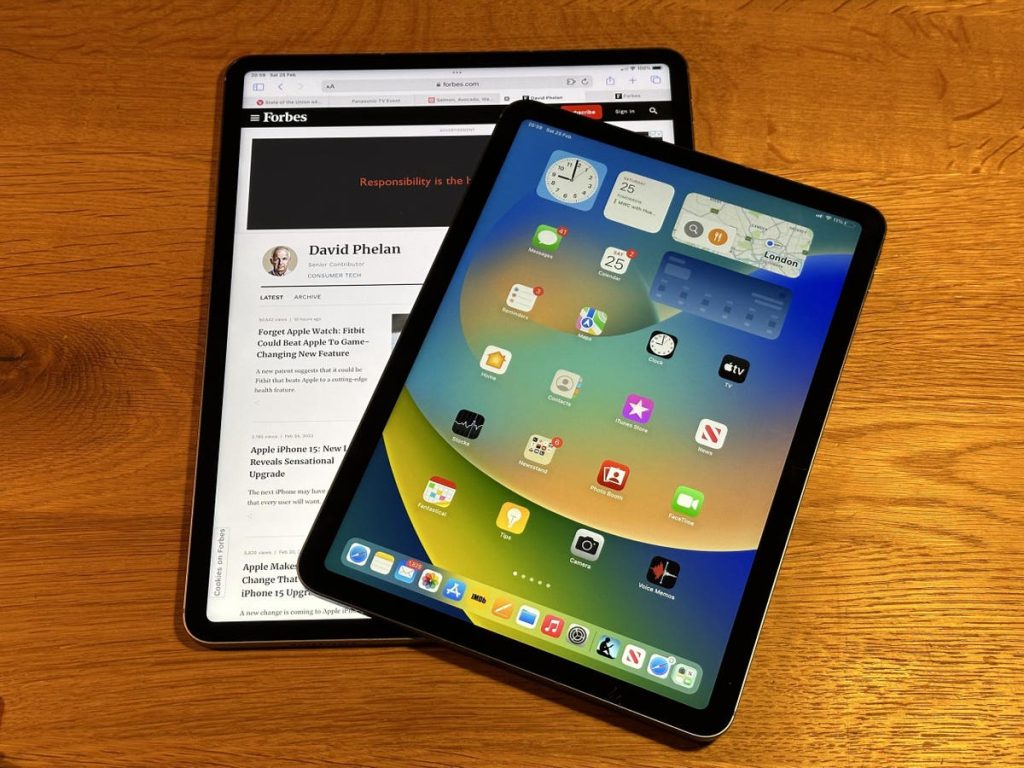Apple is gearing up to reveal its next iPads, with the lineup expected to include two new iPad Pro tablets and two iPad Air models. A surprising report reveals that the iPad Air will feature miniLED backlighting technology, similar to the current iPad Pro, which promises to enhance brightness, deep contrast, and vividness of the display. The larger iPad Air, with a 12.9-inch display, is expected to benefit from this technology, while the smaller model may not include it to keep prices competitive. This move is seen as a clever strategy to differentiate between the iPad Pro and iPad Air models, as well as to drive sales of the larger Air model.
The introduction of miniLED technology on the upcoming 12.9-inch iPad Air is a significant development that was unexpected until recently. This technology is expected to offer power consumption savings over current LED displays and improve image quality by producing better blacks. The decision to implement this technology may have been driven by a desire to achieve economies of scale in production, rather than just using leftover panels from the iPad Pro. This move will create a non-pro pairing that can serve as an alternative to the different sizes of iPad Pro models available.
Further evidence indicating the imminent arrival of a new iPad Air comes from Bloomberg’s Mark Gurman, who notes that inventory of several iPad Air models has started to dwindle at retail stores. This reduction in inventory is a typical sign that Apple is preparing to launch new models. Gurman also points out that the current iPad Pro model, which is still well-stocked, may see a price increase as it transitions to OLED displays. If this price increase is significant, Apple may retire the current model quietly when the new models are launched, rather than keeping it around as a lower-end option.
Apple’s decision to introduce miniLED technology on the new iPad Air is seen as a smart move that will not only enhance the display quality but also differentiate the model from the iPad Pro lineup. By focusing on the larger 12.9-inch iPad Air for this technology, Apple is able to drive sales of this model while keeping prices competitive. The expected introduction of new iPad models on the same day will require clear distinctions between the models, especially in terms of features like display technology, which can influence pricing decisions.
The miniLED display technology on the upcoming iPad Air is expected to provide benefits in terms of power consumption and display quality. The decision to introduce this technology may have been driven by economies of scale in production, rather than just utilizing leftover panels from the iPad Pro. By offering miniLED technology on the larger Air model, Apple is creating a compelling alternative to the different sizes of iPad Pro models available. This move is part of Apple’s strategy to continuously innovate its product lineup and offer consumers a range of options to choose from.
As Apple prepares to launch new iPad models, indicators like dwindling inventory of current models suggest that new products are on the horizon. Apple’s strategy of reducing inventory of current models before launching new ones is a common practice to generate excitement and shift attention to the upcoming models. The potential price increase for the iPad Pro models as they transition to OLED displays may result in a quiet retirement of the current model when the new models are launched. Despite challenges in marketing lower-end older models alongside new high-end models, Apple is expected to manage the transition smoothly while continuing to offer innovative products to consumers.


